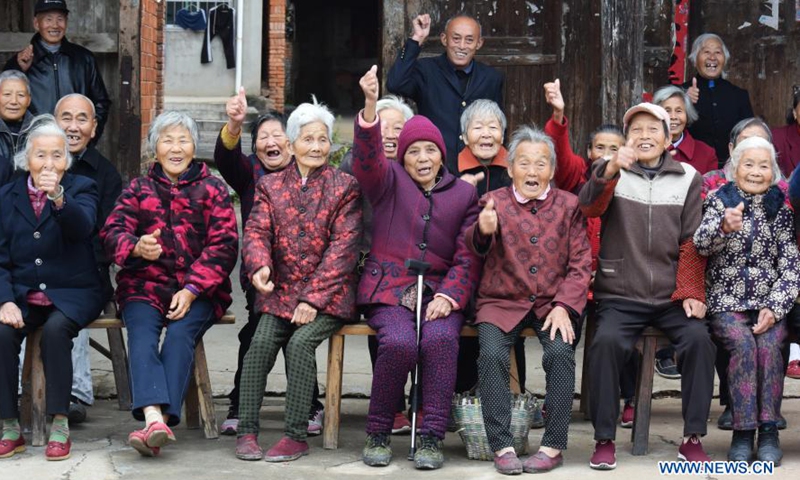
Villagers pose for a group photo in Shangwei Village of Youlan Town, Nanchang City, east China's Jiangxi Province, Nov. 22, 2020. Since 2014, volunteers from a non-profit organization in Nanchang City have kept on taking photos of smiling faces of farmers aged over 70 years old in nearby villages. (Xinhua/Chen Chunyuan)
China will be a moderately aging society in three years with 20 percent of the population aged 60 years and above and become a severely aging society by 2035 when 400 million people are 60 years and above, accounting for 30 percent of the population, a health authority official announced at a Tuesday press briefing where he introduced the country's arrangement to cope with the scenario.
Wang Haidong, director of the National Health Commission's Department of Aging and Health, said China's aging problem involves a large population and is rapidly growing, citing those numbers.
The aging situations varied greatly in different places. Aged population in rural areas is larger, and the aging problem is also more severe than in urban areas, Wang said. Data collected for 2020 showed 10 provincial-level regions have more than 20 percent of its population aged 60 years and above, mostly in Northeast and Southwest China.
Wang also noted the great pressure to cope with the aging scenario. The number and percentage in population of elderly people, the old-age dependency ratio (old, dependent population divided by working population), and social dependency ratio (young, dependent population included) will peak around 2050. It will pose great challenges to public services accessibility and the sustainability of social security system.
China will be implementing national strategies for the situation and figure out a unique path to cope with it, Wang said.
Speaking about the development in care of the elderly, Wang said as of 2021, pension system covered 1.03 billion and the health insurance covered 1.36 billion of the 1.4 total population. Long-term care services are pioneered in 49 cities, covering 145 million people.
There have been 8 million beds in 360,000 care centers as of first quarter of 2022, and more than 1.75 million beds in medical-care centers nationwide.
More than 40,000 learning centers are established for the elderly to study while cultural facilities and tourist sites are open to them for free or at discounted prices to encourage the elderly to participate in recreational activities, Wang said.
Global Times




